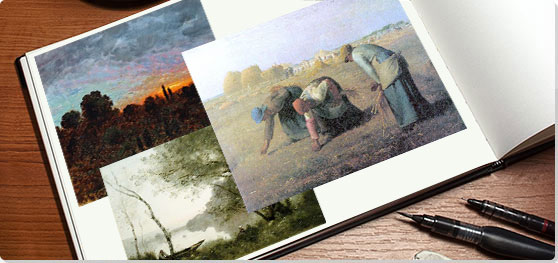Summary of The Barbizon School
Pioneers of the Naturalist movement in landscape painting, The Barbizon School was a loose association of artists who worked around the village of Barbizon, located just outside Paris near the Forest of Fontainebleau. Members came from different backgrounds and worked in a range of styles but they were drawn together by their passion for painting en plein air and their desire to elevate landscape painting from a mere background to mythological or classical scenes to a subject in its own right. The rugged countryside and ancient trees of the forest held a powerful attraction and inspired several generations of artists from Jean-Baptiste-Camille Corot, Theodore Rousseau, and Jean-François Millet to Renoir and Manet.
Key Ideas & Accomplishments
- In reaction to the stylized and idealized depictions of figures and landscapes favored by Neoclassicism, most artists that formed part of the school approached painting in a naturalistic manner - capturing the things that they saw truthfully, making careful observations and painting directly from nature to faithfully reproduce the colors and forms of the countryside.
- Although many pieces produced by artists from the school contain figures, most are without narrative and this echoes the wider tenets of the school in that the landscape itself forms the main subject matter of the work. The exception to this is Millet who extended the concepts of Naturalism to the human form, focusing on rural laborers in the area around Barbizon and often including a social commentary in his art.
- The Barbizon painters trialed various techniques including applying wet paint onto wet paint, completing a canvas in a single sitting, and concentrating on the effects of light on the landscape. Many also worked using looser brushstrokes and a freer style than was traditional in Academic painting. These experiments had a profound impact on the work of the Impressionists who travelled to Barbizon as young artists to learn from the members of the School.
Artworks and Artists of The Barbizon School

Fontainebleau: Oak Trees at Bas-Bréau
This image of a section of the forest famous for its large Oak trees exemplifies the naturalistic treatment that Corot explored at Barbizon (having first developed the technique in Italy in the late 1820s). The colors of the earth, the rugged tree trunks, and their precise foliage are almost photographic in their rendering. The viewer's eye is drawn into the woods and to the sky above, where the shape of a billowing cloud echoes the foliage of the trees. Reflecting the Dutch landscape painters' practice of depicting the landscape in three horizontal bands, Corot expands the middle zone of the trees so that a sense of their vitality and expansiveness is conveyed.
In this early work from the group, Corot brought a modern directness to landscape painting, putting aside both the Neoclassic tradition of landscape as backdrop and Romanticism's preference for sublime nature, in order to simply portray the landscape as he saw and felt it. The simplicity of the subject matter and its detailed observation reflect this. Corot reused the large tree that forms the focus of the image in his painting Hagar in the Wilderness (1835) which was displayed at the Salon the same year.
Oil on paper, laid down on wood - The Metropolitan Museum of Art, New York

Oak Trees and Pond
Depicting a quiet pond, where a herd of cattle are drinking, this image emphasizes the towering oak tree that rises from the low horizon up to the stormy sky. The tree dominates the image, reaching out to the edges of the canvas on two sides and forming an intense focal point for the viewer against the whites and greys of the clouds. The herdsmen driving the cattle are barely visible, suggesting the insignificance of humanity in comparison to nature, represented by the oak. Whilst demonstrating a naturalistic treatment of elements within the image, the painting is essentially a product of Romanticism conveying the power of nature through both the oak tree and the dramatically lit clouds which threaten an impending storm.
Whilst visiting England in the early 1830s, Dupré encountered the work of John Constable. This landscape with its precisely depicted botanical details, muted but realistic hues, and subject matter showing a quiet scene of rural life demonstrates Constable's significant influence on Dupré. Dupré is sometimes credited with bringing the English style of landscape painting (of which Constable was a key proponent) to France. Whilst it is highly likely that Dupré popularized the style amongst members of the Barbizon School, Constable was certainly not unknown in Paris prior to this point due to his exhibition of paintings at the Salon.
Oil on canvas - Musée d'Orsay, Paris France

The Beech Tree
This photograph depicts a single great beech tree in the Forest of Fontainebleau that seems to lean back as if tearing free of the earth and exposing its roots. As a result, the tree conveys a sense of movement, a dynamic energy, as its foliage fills up the picture frame, its trunk glowing with sunlight.
Le Gray's work brought the then new art of photography to the Barbizon School. He was one of the most important early French photographers, due to his iconic photographs, his technical innovations in the medium, and his influence as a teacher. His students included Charles Nègre, Henri LeSecq, Olympe Aguado, and Masime Du Camp. Like the painters, he often depicted the forest by focusing on particular trees, which became dynamic, central characters. As a result, a mutually influential relationship developed between photography and painting in Barbizon.
Albumen silver - J. Paul Getty Museum, Los Angeles, California

The Gleaners
This painting is one of Millet's most famous and embodies the Realist emphasis that he brought to the Barbizon School. As he walked the fields around Barbizon, the artist often saw scenes of gleaning. This was an ancient practice of collecting leftover crops from harvested fields. The right of gleaning was enshrined in law and this allowed poor families to supplement their, often meager, diets. In the background of the image are signs of the abundance of the harvest. The horse drawn cart overloaded with wheat, the crowd of harvesters returning home, and the steward on a horse are bathed in a shimmering golden haze distancing these visions of plenty and, in the case of the steward, social status from the poverty of the women. On the other hand, the heavy shadows of the foreground obscure the women's faces, making them anonymous figures worn by hard and repetitive labor. As a result, a contrast between poverty and plenty, and between the natural beauty of the fields and the tattered, work-worn women, is created, producing a powerful social commentary.
The work was accepted to the Salon, where it received very mixed reviews. It was praised by some for its dignified representation of the rural poor whilst others criticized it for its realism, ugliness, and social radicalism, linking it with the new socialist movements and acting as an uneasy reminder of the Revolutions of 1848. The painting was over a meter in width and this contributed to its censure as canvases of this size had previously only been used for religious or mythological subject matter and Millet's depiction of poor women was not seen as an appropriate subject for the scale.
Oil on canvas - Musée d'Orsay, Paris France

The Village of Gloton
In the late 1840s, Daubigny, interested in painting river views, moved from Barbizon to Auvers-sur-Oise, another area close to Paris and known for its natural beauty. This riverscape, depicting a sunlit village and its reflection in the water comes from this period and shows the artist's strong sense of composition honed during his time in Barbizon. The bank of the river and row of houses on the right directs the viewer's gaze toward the horizon and this is mirrored on the left of the image by the thick grove of trees which forms a softer diagonal, ending at the same perspective point. The white of the houses and the red roofs add color to the otherwise pastoral scene. Despite the presence of figures on both the bank and river, a feeling of quiet contemplation and harmony pervades the piece, created by the stillness of the water and sky.
Daubigny built a studio on a houseboat which he called Le Botin (Little Box) to paint scenes along the Seine and Oise Rivers, and this work was painted from the boat, allowing the vantage point of the piece to be mid-river. Daubigny's pioneering practices of painting sur le motif, or in one session and applying wet paint onto wet paint, combined with his brushwork and his emphasis on the reflected play of light, influenced a number of the Impressionists, particularly Monet with whom he became close friends and who later similarly outfitted his own boat. Van Gogh was also influenced by Daubigny, as seen in one of his final paintings, Daubigny's Garden (1890).
Oil on panel - de Young/Legion of Honor Fine Arts Museum of San Francisco

The Great Oaks of Bas-Bréau
This painting depicts a grove of towering ancient oak trees at Bras-Bréau, their massive and twisted trunks lit up by sunlight, so that the trees themselves become the focus of the painting, celebrating them as symbols of power, persistence, and beauty. Rousseau expressively renders the scene using a palette of greens and an impasto technique to produce an intense depth of color and a complex interplay of light and shade which hints at a darker and more mysterious side to the forest. The figure of the man to the right in a small patch of sunlight is easily overlooked, suggesting the human presence as transitory and minor among the ancient trees.
Rousseau was passionate about the Forest of Fontainebleau and later was a leading advocate for its preservation from human development. He would trek into the woods for days at a time, often leading and mentoring other painters on outdoor painting excursions. He was considered the master painter of the forest and his advocacy and techniques attracted a number of followers to Naturalism.
Oil on canvas - J. Paul Getty Museum, Los Angeles, California

Ville-d'Avray
In this later work, Corot returned to one of his favorite subjects, the view of the lake on his family's estate. Like many of the artists associated with the Barbizon School, Corot often visited the Forest of Fontainebleau but never resided there and he painted other rural areas as well. At first, he included a woman and child in the center of the image, but later removed the child perhaps finding its presence too sentimental or narrative. As a result, the woman is simply part of the landscape, the yellow of her skirt and head covering adding a bright counterpoint to the silvery water behind her. The painting conveys a sense of nature as all-encompassing, a delicate web interweaving the sky, the water, and the earth. When it was shown at the Salon of 1870, the critics praised its quiet lyricism.
The influence of photography, which Corot took up in the 1860s, can be seen in the work's monochromatic tonality, the unusual depth of field, and in the blurring of the foliage in the foreground which merges with the sky to form an abstract pattern. As with photography, there is also a clear emphasis on the effect of light which forms shapes on the lake, highlights the buildings in the background, and pours from behind the vegetation on the horizon giving the piece an ethereal luminosity.
Oil on canvas - The Metropolitan Museum of Art, New York New York

The Approaching Storm
This image highlights Diaz's talent for creating theatrical lighting effects; a shaft of sunlight pierces the stormy sky, powerfully illuminating the rocky landscape, the single tree, and the lone human figure in the distance. This work shows Diaz's preoccupation with strong contrasts of dark and light which emphasizes the impending storm and conveys a dramatic feeling of overwhelming natural forces through which the distant individual must find her way. Whilst the piece contains themes of isolation and imminent struggle there is no direct narrative and this allows the viewer to construct one, writing their own experiences onto the work.
There is an element of the fantastical about the piece and this can be seen as the Romantic influence on the artist. This is enhanced with loose brushwork and a wet on wet technique creating a vigorously textured surface which serves to heighten the drama of the work.
Oil on canvas - The Norton Simon Foundation

Gypsy Girl with Mandolin
Corot began painting Italian peasants in traditional costumes on his first trip to Italy and he retained an interest in the subject matter throughout his career. Earlier examples include Italian Peasant Boy (1825) and Two Italian Peasants (1843). Of the artists associated with the Barbizon School, Corot (along with Millet) was one of the few who was as known for his figurative work as much as for his landscapes. He believed that there was an integral connection between the two, noting that, "If someone knows how, without any tricks, to get down a figure, he is able to make a landscape; otherwise he can never do it".
This is a studio painting and as with most of his portraits, the tones are muted, punctuated, here, by the red of the trimming and head covering giving the girl a feeling of youth and vitality. The figure stares passively to the left of the canvas, the diffused lighting emphasizing her face and neck. These are rendered in a detailed fashion which contrasts with the looser brushstrokes of the clothing and background. The work is infused by a sense of calm and solitude. Both Pablo Picasso and Juan Gris were inspired and influenced by this work and others like it, as seen in Gris's Woman with a Mandolin (after Corot) (1916) and Picasso's Girl with Mandolin (1910).
Oil on canvas - Sao Paulo Museum of Art
Beginnings of The Barbizon School
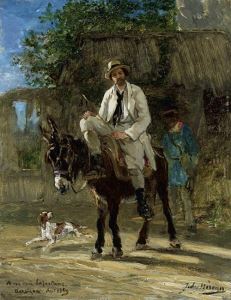
The Forest of Fontainebleau first began attracting artists in the 18th century including the Neoclassicists Jean-Joseph-Xavier Bidauld, Théodore Caruelle d'Aligny, and Alexandre Desgoffe. The painters were drawn, not only, to the wild and varied landscape, but also to the French fables and legends that were associated with the forest. It was, however, the arrival of Corot and Théodore Rousseau in the early 19th century that made the area into a magnet for artists including Jean-François Millet, Charles-François Daubigny, Constant Troyon, Charles Jacque, and Narcisse-Virgilio Díaz de la Peña.
In the early 1820s, Corot began sketching and painting landscapes in and around Fontainebleau. Whilst he never actually lived in the area, he returned to it frequently including in both 1829 and 1830 and he was an influential and active supporter of other Barbizon artists. In the early 1830s, the development of the Lyon railway system from Paris made easy travel to Barbizon possible and the opening of the Auberge Ganne, a new inn, provided somewhere for artists to live and work. The inn rapidly became a hub where artists could meet, exchange ideas, and form collaborative partnerships.
In 1833 Theodore Rousseau started to visit for extended periods of time during which he would explore the environment, engaging in outdoor painting and sketching. His passion for the forest and for landscape painting made him a natural leader of the Barbizon group and other artists joined him on painting excursions and were influenced by his practice and ideas. Over the next decades the village of Barbizon and its surrounding environs became a primary art destination, particularly during the Revolutions of 1848 which caused many Parisian artists to escape to the relative safety of the countryside. During this time hundreds of paintings and photographs were created, depicting the area and its rural life.
The Barbizon School: Concepts, Styles, and Trends
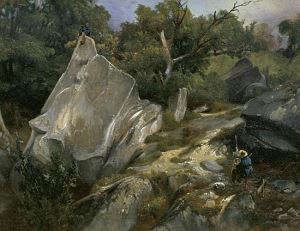
Members of the School had diverse interests and artistic styles, but predominantly concentrated on landscapes and painting in the outdoors, pioneering the concepts of Naturalism. As a movement Naturalism focused on depicting a subject matter truthfully and without artifice (although the term itself was not coined until later). Its development was influenced by key figures in the School as well as historic movements and painters from further afield.
Neoclassicism and Camille Corot
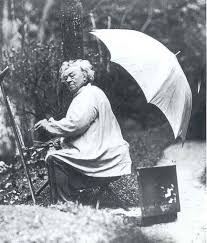
In the Neoclassical tradition, landscape painting was seen as relevant only if presented in an idealized style and as a backdrop to historical or classical narrative. In 1816 the French Academy launched a Prix de Rome for historical landscape to attract new artists to the style. Enthusiasm for landscape painting spread among young artists, with many of them drawn, not to historical landscape, but to viewing and studying the naturalistic landscapes of the 17th century Dutch painters such as Jacob van Ruisdael and Meindert Hobbema. At the same time a number of artists began sketching outdoors in the environs outside of Paris, of which the most notable was Corot.
While studying with the artist Achille Etna Michallon, Corot learned to paint the scenes he saw naturalistically. As Corot said, "I made my first landscape from nature...under the eye of this painter, whose only advice was to render with the greatest scrupulousness everything I saw before me...since then I have always treasured precision." This precision can be seen in his Study of a Tree Trunk in the Forest of Fontainebleau, October (1822) in which he depicts a fallen and shattered tree down to the texture of its ancient bark.
The influence of both Neoclassicism and Naturalism can be seen in Corot's Hagar in the Desert (1835) in which he combined a depiction of the Biblical story of Hagar and Ishmael with a landscape derived from his Fontainebleau: Oak Trees at Bas-Bréau (c.1832). This combination was due, in part, to his awareness that success at the Salon favored the Neoclassical style, but also due to his own multifaceted approach, resulting in simple landscapes, but also figurative painting, and genre work. He played a major role in bringing the grandeur associated with Neoclassicism to landscape painting as a subject in its own right.
Similarly, Narcisse-Virgilio Díaz de la Peña combined Neoclassicism with a naturalistic treatment of the landscape, as shown in his works where goddesses or nymphs from Greek mythology are portrayed within the forest setting. Still, the work of both artists favored a naturalistic treatment of the landscape, depicting its details precisely, rather than the idealizing treatment of nature favored by Neoclassicism.
Romanticism and the Influence of Constable
Themes of Romanticism ran through the works of a number of the Barbizon painters and this can predominantly be attributed to the influence of the British artist John Constable whose landscapes combined a naturalistic treatment, based upon careful observation, with a Romantic sensibility. Constable's work was first exhibited in Paris in 1824 and members of the Barbizon School drew inspiration from his dedication to landscape painting as well as his broad brushstrokes and loose style that was at odds with the traditions of the Salon and Academic painting. Barbizon painters developed Constable's impasto style and freedom of brushwork and this was further exaggerated by the Impressionists. It was in their attachment to nature, however, that the Barbizon painters most exemplified the Romantic Movement, as Alfred Sensier, the biographer of both Rousseau and Millet, said "... the proud majesty of the old trees, the virgin state of rocks and heath... all these intoxicated them with their beauty and their smell. They were, in truth, possessed."
Realism and Millet
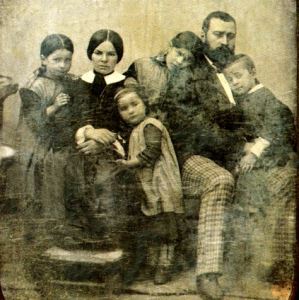
The most important Realist associated with the Barbizon group was Jean-François Millet. He became close friends with Troyon, Rousseau, Díaz, and Jacque in Paris and subsequently moved to Barbizon with his large family in 1849, to escape the political and social turmoil in the capital. He continued to live in the area for the rest of his life.
As a movement, Realism began in the mid-1850s and focused on the subjects of the working poor, modern conditions, and social reform. Rather than depicting scenes of the forest, Millet was drawn to the fields and plains extending from Barbizon to Chailly where he observed the workers. Paintings such as his iconic The Gleaners (1857) focused on scenes of rural labor and were often controversial for their depictions of poverty. In Barbizon, Millet found friendship and support particularly from Rousseau and continued to develop his style. He inspired many later artists including the American William Morris Hunt who came to the area to study with him.
Barbizon School and Literature
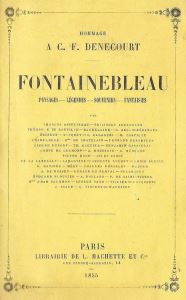
The Forest of Fontainebleau didn't just inspire painters but took on a literary life in the writing of the Romantics. One of the first noted authors to visit the area was the French novelist Georges Sand in 1833, and others followed. In 1855 an anthology including works by Victor Hugo, Alphonse de Laramartine, Théophile Gautier, and Fernand Desnoyers was published dedicated to the forest. The painters' views of nature were often shaped by their reading of the Romantic writers, but the influence worked in both directions, as the painters' depictions inspired later authors. Novelist Gustave Flaubert completed his novel Sentimental Education in 1869 while staying in Fontainebleau, and the landscape itself became a central motif of the novel.
Barbizon and Photography
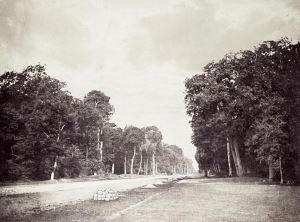
Beginning in the 1850s early photographers such as Gustave Le Gray, Constant Famin, Alphone Jeanrenaud, and Auguste Giraudon went to Barbizon to take pictures of the landscape. Their subjects were similar to those of the painters with whom they often worked side by side, examples include Beech Tree near the Bodmer Oak (early 1860s) and Marsh at Piat (c. 1863) both by Eugene Cuvelier. Genre photographs were also popular as seen in Auguste Giraudon's Artist, Peasant (c. 1870), depicting a young peasant woman resting against a small hay cart with the landscape behind her. Additionally portraits of other artists at work in the forest were created such as Constant Famin's Théophile Chauvel near the Mare aux Fées, (1865-1870). The close working relationships of photographers and artists were mutually influential, for instance, the tonalities and focus of Corot's later work were inspired by his own exploration of photography.
Later Developments - After The Barbizon School
Initially ignored by critics and rejected from the Salon, the work of the Barbizon painters only began to attain success in the 1850s. Rousseau, whose pieces had been rejected by the Salon from 1836-1841, finally had three canvases accepted in 1849. From this point onwards Naturalism became increasingly popular and this was reflected in the 1855 Universal Exposition which exhibited a number of the Barbizon artists.
From the 1860s The Barbizon School led to the formation of other groups and associations of artists throughout Europe. The artists in each area were drawn to the landscape, rural life, and en plein air painting but, as with the Barbizon School, they practiced a variety of styles. Some painters traveled from one group to another, often to work or associate with specific artists.
Pont-Aven
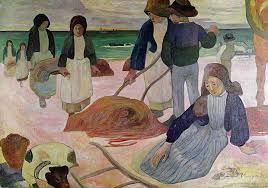
The Pont-Aven School developed in the 1880s and was named after the village of Pont-Aven in Brittany where it was located. A group of Irish artists including Augustus Nicholas Burke, Roderic O'Conor, Nathaniel Hill, and Joseph Malachy Kavanagh were active in the area, and their works favored a naturalistic approach in their landscapes and genre scenes.
Around the same time, Paul Gauguin, Émile Bernard, and Paul Serusier developed their own distinctive Post-Impressionist style as they painted scenes of Pont-Aven. They used non-naturalistic colors, bold forms and patterns, and placed an emphasis on human subjects.
Concarneau
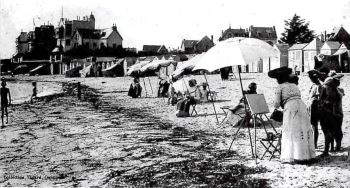
Alfred Guillou and Théophile Deyrolle founded the School of Concarneau in Brittany and they were subsequently joined by some painters from the nearby Pont-Aven group, predominantly Americans such as Edward E. Simmons, Arthur W. Dow, and Eugene Lawrence Vail. The most noted artist to join the group at Concarneau was Jules Bastien-Lepage in 1883. Bastien-Lepage was extolled by Zola as the leader of Naturalism, and his presence attracted a number of young artists including the Scandinavian Peder Severin Krayer. From 1880-1890 the school combined realistic subjects with genre subjects, particularly of the fishing boats and harbor life.
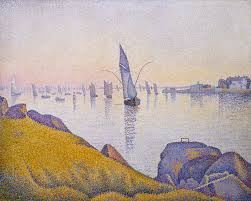
Concarneau also attracted a new generation of artists. The Neo-Impressionist Paul Signac went to Concarneau in 1891, where he did his pointillist series Opus 219-221 which depicts the fishing boats at different times of the day with musical subtitles such as Morning Calm, Concarneau, Opus 219 (Larghetto) (1891). Artists of other modern art movements also worked in the area as seen in the Fauvist seascape The Harbor Front and Docks (1905) by Jean Puy.
The Hague School
Johannes Warnardus Bilders founded the Oosterbeek art colony in Holland, modeled after The Barbizon School. His work and examples influenced a number of young artists including Jozef Israëls, Anton Mauve, and his son Gerard Bilders, who pioneered the Hague School. While adopting Barbizon’s emphasis on landscape and scenes of rural life, the Hague School strove for what Bilders described as “the impression of a warm, fragrant gray.” Because of its use of a somber and muted color palette, the Hague School was dubbed 'The Gray School'.
Newlyn School
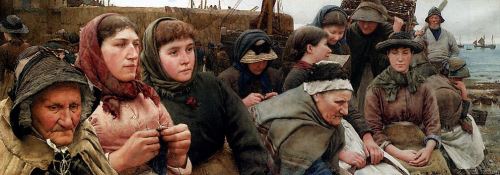
Named after the fishing village in Cornwall, England, where it was located, the Newlyn School artists were directly influenced by the Barbizon School to found their own group. The group was pioneered by Walter Langley in the 1880s and members included Samuel John 'Lamorna' Birch, Walter Langley, Stanhope Forbes, Frank Bramley, and the Irish painter Norman Gastin. Harbor scenes, depicting the fishing village's life, often with a tragic cast, were a common subject, as seen in Bramley's A Hopeless Dawn (1888), depicting a woman mourning her husband who has been lost at sea.
Legacy
The Barbizon School helped to establish landscape painting as a subject in its own right, and painting outdoors as a primary practice.. The Barbizon painters also shaped the development of Impressionism. In 1860 the artist Charles Gleyre began sending his students, which included Renoir, Sisley, and Bazille to Barbizon to sketch and draw. Manet also worked in the forest producing preliminary studies for his groundbreaking Le Déjeuner sur l'Herbe (1863). In Barbizon they formed friendships and working relationships with the more established artists of the group, adopting their practices of outdoor painting, finishing a work in a single session, and using a wet on wet technique and new synthetic pigments. In 1874 the Forest of Fontainebleau was officially established as the first 'Artistic Reserve' acknowledging the importance of the site itself in the development of modern art.
Certain artists from the group, particularly Millet and Corot, also had a more direct effect on other painters. Millet's art initially influenced contemporaries such as Rosa Bonheur and William Morris Hunt, and the Post-Impressionists, Georges Seurat and Van Gogh. His influence continued into the 20th century; Salvador Dali was inspired by The Angelus (1857-59) and the photographer Henri Cartier-Bresson studied Millet's images. Millet's The Gleaners also inspired the French New Wave filmmaker Agnès Varda's The Gleaners and I (2002). Corot's influence was acknowledged by Camille Pissarro. Berthe Morisot, Antoine Chintreuil, Stanislas Lépine, and François-Louis Français. Claude Monet noted that, "There is only one master here - Corot. We are nothing compared to him, nothing". Corot's Woman in Blue (1874) directly inspired Renoir's Mrs. Hartmann painted that same year, and his geometric compositions influenced both Cezanne and Seurat. Later artists such as Pablo Picasso and Juan Gris referenced his works in their choice of subjects.
Useful Resources on The Barbizon School
-
![The Barbizon Painters]() 2k viewsThe Barbizon PaintersGalerie Michael
2k viewsThe Barbizon PaintersGalerie Michael -
![Barbizon: The Cradle of Impressionism]() 17k viewsBarbizon: The Cradle of ImpressionismBy Scott Saraceno Media Productions
17k viewsBarbizon: The Cradle of ImpressionismBy Scott Saraceno Media Productions
-
![Millet: The Pain of Pastoral Life: Millet's Impact on Van Gogh]() 4k viewsMillet: The Pain of Pastoral Life: Millet's Impact on Van GoghOur PickBy art historian and scholar of Van Gogh Judy Sund. The Frick Collection
4k viewsMillet: The Pain of Pastoral Life: Millet's Impact on Van GoghOur PickBy art historian and scholar of Van Gogh Judy Sund. The Frick Collection - Barbizon expert Steven Adams explores Narcisse-Virgilio Díaz de la Peña's Sunny Days in the Forest
-
![Conversations on Connoisseurship: Corot and the Barbizon School of Landscape Painters]() 187 viewsConversations on Connoisseurship: Corot and the Barbizon School of Landscape PaintersWestmont Museum
187 viewsConversations on Connoisseurship: Corot and the Barbizon School of Landscape PaintersWestmont Museum - Lecture: New Light on an Old Masterpiece: Théodore Rousseau's "Morning Effect"Our PickScott Allan, Associate Curator of Paintings, J. Paul Getty Museum / November 5, 2016 / Norton Simon Museum
